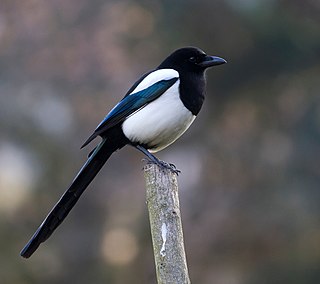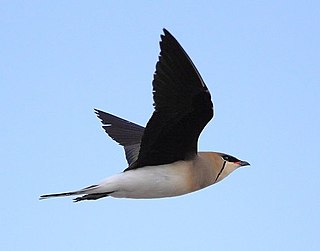Related Research Articles

The true finches are small to medium-sized passerine birds in the family Fringillidae. Finches have stout conical bills adapted for eating seeds and nuts and often have colourful plumage. They occupy a great range of habitats where they are usually resident and do not migrate. They have a worldwide distribution except for Australia and the polar regions. The family Fringillidae contains more than two hundred species divided into fifty genera. It includes species known as siskins, canaries, redpolls, serins, grosbeaks and euphonias.

Butterflies (Rhopalocera) are insects that have large, often brightly coloured wings, and a conspicuous, fluttering flight. The group comprises the superfamilies Hedyloidea and Papilionoidea. Butterfly fossils date to the Paleocene, about 56 million years ago.

Odonata is an order of flying insects that includes the dragonflies and damselflies. Members of the group first appeared during the Triassic, though members of their total group, Odonatoptera, first appeared in Late Carboniferous.

Magpies are birds of the Corvidae family. Like other members of their family, they are widely considered to be intelligent creatures. The Eurasian magpie, for instance, is thought to rank among the world's most intelligent creatures and is one of the few nonmammalian species able to recognize itself in a mirror test. They are particularly well known for their songs and were once popular as cagebirds. In addition to other members of the genus Pica, corvids considered as magpies are in the genera Cissa, Urocissa, and Cyanopica.

The red-winged blackbird is a passerine bird of the family Icteridae found in most of North America and much of Central America. It breeds from Alaska and Newfoundland south to Florida, the Gulf of Mexico, Mexico, and Guatemala, with isolated populations in western El Salvador, northwestern Honduras, and northwestern Costa Rica. It may winter as far north as Pennsylvania and British Columbia, but northern populations are generally migratory, moving south to Mexico and the Southern United States. Claims have been made that it is the most abundant living land bird in North America, as bird-counting censuses of wintering red-winged blackbirds sometimes show that loose flocks can number in excess of a million birds per flock and the full number of breeding pairs across North and Central America may exceed 250 million in peak years. It also ranks among the best-studied wild bird species in the world. The red-winged blackbird is sexually dimorphic; the male is all black with a red shoulder and yellow wing bar, while the female is a nondescript dark brown. Seeds and insects make up the bulk of the red-winged blackbird's diet.

Starlings are small to medium-sized passerine birds in the family Sturnidae. The Sturnidae are named for the genus Sturnus, which in turn comes from the Latin word for starling, sturnus. Many Asian species, particularly the larger ones, are called mynas, and many African species are known as glossy starlings because of their iridescent plumage. Starlings are native to Europe, Asia, and Africa, as well as northern Australia and the islands of the tropical Pacific. Several European and Asian species have been introduced to these areas, as well as North America, Hawaii, and New Zealand, where they generally compete for habitats with native birds and are considered to be invasive species. The starling species familiar to most people in Europe and North America is the common starling, and throughout much of Asia and the Pacific, the common myna is indeed common.

The black-winged stilt is a widely distributed very long-legged wader in the avocet and stilt family (Recurvirostridae). The scientific name H. himantopus is sometimes applied to a single, almost cosmopolitan species. Alternatively, it is restricted to the form that is widespread in Europe, Asia and Africa, which equals the nominate group of Himantopus himantopussensu lato. Most sources today accept 1–4 species. The scientific name Himantopus comes from the Greek meaning "strap foot" or "thong foot".

The black tern is a small tern generally found in or near inland water in Europe, Western Asia and North America. As its name suggests, it has predominantly dark plumage. In some lights it can appear blue in the breeding season, hence the old English name "blue darr". The genus name is from Ancient Greek khelidonios, "swallow-like", from khelidon, "swallow": another old English name for the black tern is "carr swallow". The species name is from Latin niger "shining black".

The white-winged tern, or white-winged black tern, is a species of tern in the family Laridae. It is a small species generally found in or near bodies of fresh water across much of the world, including Europe, Africa, Asia, and Australia. The genus name is from Ancient Greek khelidonios, "swallow-like", from khelidon, "swallow".

The black-winged pratincole is a wader in the pratincole bird family, Glareolidae. The genus name is a diminutive of Latin glarea, "gravel", referring to a typical nesting habitat for pratincoles. The species name commemorates the Finnish-born zoologist and explorer Alexander von Nordmann.

The blue-winged warbler is a fairly common New World warbler, 11.5 cm (4.5 in) long and weighing 8.5 g (0.30 oz). It breeds in eastern North America in southern Ontario and the eastern United States. Its range is extending northwards, where it is replacing the very closely related golden-winged warbler, Vermivora chrysoptera.

The spur-winged lapwing or spur-winged plover is a lapwing species, one of a group of largish waders in the family Charadriidae.

The spur-winged goose is a large bird in the family Anatidae, related to the geese and the shelducks, but distinct from both of these in a number of anatomical features, and therefore treated in its own subfamily, the Plectropterinae. It occurs in wetlands throughout sub-Saharan Africa.

Swallowtail butterflies are large, colorful butterflies in the family Papilionidae, and include over 550 species. Though the majority are tropical, members of the family inhabit every continent except Antarctica. The family includes the largest butterflies in the world, the birdwing butterflies of the genus Ornithoptera.

Bird flight is the primary mode of locomotion used by most bird species in which birds take off and fly. Flight assists birds with feeding, breeding, avoiding predators, and migrating.

The Agromyzidae are a family commonly referred to as the leaf-miner flies, for the feeding habits of their larvae, most of which are leaf miners on various plants.

Flight feathers are the long, stiff, asymmetrically shaped, but symmetrically paired pennaceous feathers on the wings or tail of a bird; those on the wings are called remiges, singular remex, while those on the tail are called rectrices, singular rectrix. The primary function of the flight feathers is to aid in the generation of both thrust and lift, thereby enabling flight. The flight feathers of some birds perform additional functions, generally associated with territorial displays, courtship rituals or feeding methods. In some species, these feathers have developed into long showy plumes used in visual courtship displays, while in others they create a sound during display flights. Tiny serrations on the leading edge of their remiges help owls to fly silently, while the extra-stiff rectrices of woodpeckers help them to brace against tree trunks as they hammer on them. Even flightless birds still retain flight feathers, though sometimes in radically modified forms.

Genoways's yellow bat is a species of vesper bat found only in Mexico. It is threatened by habitat loss. Due to its imperiled status, it is identified by the Alliance for Zero Extinction as a species in danger of imminent extinction.

The red-winged fairywren is a species of passerine bird in the Australasian wren family, Maluridae. It is non-migratory and endemic to the southwestern corner of Western Australia. Exhibiting a high degree of sexual dimorphism, the male adopts a brilliantly coloured breeding plumage, with an iridescent silvery-blue crown, ear coverts and upper back, red shoulders, contrasting with a black throat, grey-brown tail and wings and pale underparts. Non-breeding males, females and juveniles have predominantly grey-brown plumage, though males may bear isolated blue and black feathers. No separate subspecies are recognised. Similar in appearance and closely related to the variegated fairywren and the blue-breasted fairywren, it is regarded as a separate species as no intermediate forms have been recorded where their ranges overlap. Though the red-winged fairywren is locally common, there is evidence of a decline in numbers.

Cimoliopterus is a genus of pterosaur that lived during the Late Cretaceous in what is now England and the United States. The first known specimen, consisting of the front part of a snout including part of a crest, was discovered in the Grey Chalk Subgroup of Kent, England, and described as the new species Pterodactylus cuvieri in 1851. The specific name cuvieri honours the palaeontologist George Cuvier, whereas the genus Pterodactylus was then used for many pterosaur species that are not thought to be closely related today. It was one of the first pterosaurs to be depicted as models in Crystal Palace Park in the 1850s. The species was subsequently assigned to various other genera, including Ornithocheirus and Anhanguera. In 2013, the species was moved to a new genus, as Cimoliopterus cuvieri; the generic name Cimoliopterus is derived from the Greek words for "chalk" and "wing". Other specimens and species have also been assigned to or synonymised with the species with various levels of certainty. In 2015, a snout discovered in the Britton Formation of Texas, US, was named as a new species in the genus, C. dunni; the specific name honours its collector, Brent Dunn.
References
- ↑ funet.fi
- ↑ mothphotographersgroup
- ↑ Proc. ent. Soc. Wash. 12 (2) : 69
 This article incorporates text from this source, which is in the public domain .
This article incorporates text from this source, which is in the public domain .